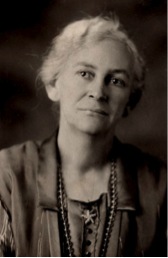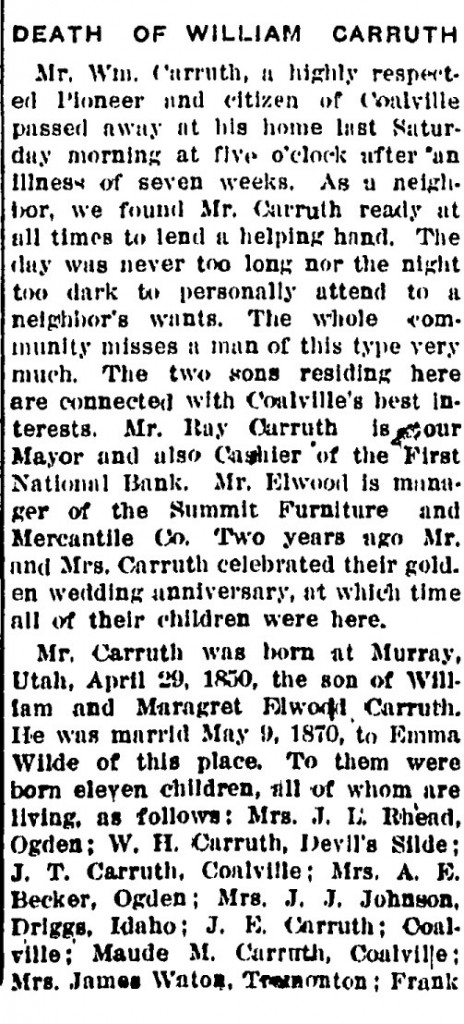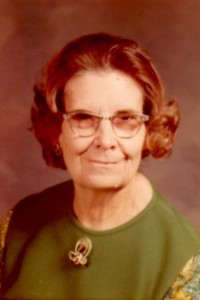By Annie Hansen Gren – 1931
Annie Hansen Gren 1878 – 1933
My Father, Peter Hansen, the son of Hans Jorgenson Kaae, was born September 29, 1827 in Haulykke, Lolland, Denmark.
His parents were well to do farmers and hired from five to seven men to work for them besides themselves. The boys, as soon as they were old enough, we sent out to learn a trade. My father at the age of 13 started to learn basket making. The food was poor and he had to carry such large bundles of willows up stairs and was injured, which injury he carried throughout his life. He was taken from there and learned weaving as his trade.
He married and had a family of four boys. The family became members of the Church of Jesus Christ of Latter-day Saints in 1857, and left soon after for America.
In relating the story of my father’s pioneer days, I will tell it to you as he used to tell it to me in the evenings when I was a little girl. I will try to give a short history of his voyage to America and his journey across the plains.
Here I am, sitting by the side of my log cabin. I can hardly believe I am so far away from my native land. Many thoughts pass through my mind as I think of the journey from Denmark to Utah, when I first heard the Gospel. I remember one day my wife, son and I were sitting by the table eating our dinner when we saw two strange men approaching the house. They were men with a strange gospel. They told us of this new religion, and after many meetings we were converted and joined the church, being baptized on April 5, 1857.
We were happy, though despised by our neighbors and even our own parents turned against us. By and by three more sons entered our home, but our folks still being very bitter towards us, caused us to finally decide to sell all we had and leave for Zion. One of the Elders loaned us some money, and with that and what we had saved, we started for America.
We left in May, 1866. It took several days for us to reach Copenhagen where we set sail in a very poor and unwholesome sail boat. There were several families of immigrants on board. We battled against storm and waited for the right winds, and in six weeks we landed in New York City. Many of the people were sick and all were tired and weary from the long sea voyage. We were anxious to be on our way, so we left as soon as a company could be made up. We crossed the plains with ox teams.
We had no sooner started on the journey than many people took sick with that dreadful disease called cholera. They were dying incessantly. My wife became sick, we did all that we could but help and medicine were very scarce. She passed away on the 8th of August 1866. She was placed in a box for a casket, but not having many boxes a little girl belonging to the same company was put in the box with her. I felt that I could hardly stand the burden, but when I looked around the whole company was facing the same privations.
We had with us and old blacksmith who did the blacksmithing. He was a good fiddler and would play in the evening for the folks to dance, but more and more people became sick, and no one would dance because the well had to help with the sick.
It was well along in the summer and very hot, with cholera still raging, when my sons Nelse and Andrus became very sick. I did not know what to do, my wife being gone and four boys to care for. Nelse said, “Father I am so sick I can’t eat, but if I only could get a small potato I think I would get well.” I made up my mind that if there were a potato in the company my son should have it. I went to every wagon and asked if there was one potato, but not one could be found. I was very sad to think so small a favor could not be granted. The next morning, the 27th of August, 1866 he died. There being no more boxes, I wrapped him in a sheet and in the evening I went out and buried my boy. I built a smudge with buffalo chips on the grave so the wolves would not scent the remains and devour them.
This was not the end of my tribulations, as four days later on September 1st, Andrus died, and once more I had to dig another grave and build a smudge to keep away the wolves. Now I felt that my burden was heavy.
A young girl named Betty, 18 years old, being the only member of her family who had joined the church, was traveling alone. She came and offered to help me. I was very glad of this kindness, but she was only with me three days when she passed away, and not having any folks it became my lot to care for and bury her.
Then my third boy, Danel took sick. There was a woman with a large family in our company. Her husband had died and some of her children were sick so we helped each other the best we could, but it seemed that Danel could not live, and once again, this time on October 11, 1866 I dug another grave in the silent night, hearing the wolves howl and again built a smudge to keep them away.
My son Jorgen and I were alone. He was fourteen years old, the oldest of the family. We did what we could to help the other sufferers. On and on we came.
I will never forget the morning before we entered the Salt Lake Valley, we could hear the cocks crow. I never heard a more welcome sound. We reached Salt Lake City on October 23, 1866, being over five months on the journey.
We were weary, sad and miserably dirty, but we had friends who made us comfortable. After resting in Salt Lake awhile, we went to Provo and settled there.
I worked for farmers grubbing land and earned a small piece of land where I built a log cabin. We lived here for three years fighting the grasshoppers of 1867 and 1868. The railroad came through and bought my property. I then worked for them and with what I got for my little place and what cash I earned I bought a larger piece of land and built me another log cabin.
I worked for a farmer and earned a cow from which I raised two steers and broke them for oxen, so I had a team to do my farming.
I often cut boys hair in that neighborhood, and every Sunday morning there were as high as ten or twelve to have a haircut, but so many came, we decided to cut hair Saturday afternoons. So I would quit work at noon Saturday and go home, the boys would be waiting. After I cut their hair they would go and take a bath in the creek that flowed through the place, leaving them ready for Sunday morning. Nearly all the baptisms were performed in this creek for many years.
My son Jorgen and I lived alone for nine years, then I married my second wife on December 18, 1875. Six children were born to us. My son Jorgen was married a short time after I was.
My father, Peter Hansen buried his second wife in 1902 and he died June 18, 1903.
This story was given to me by my grandmother Helen Madeline Brown Gren.


